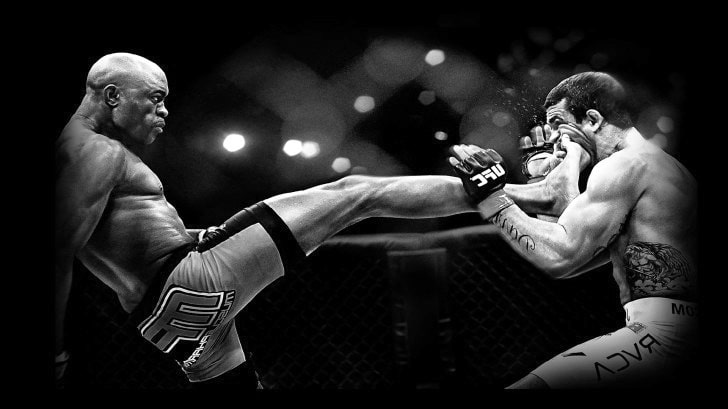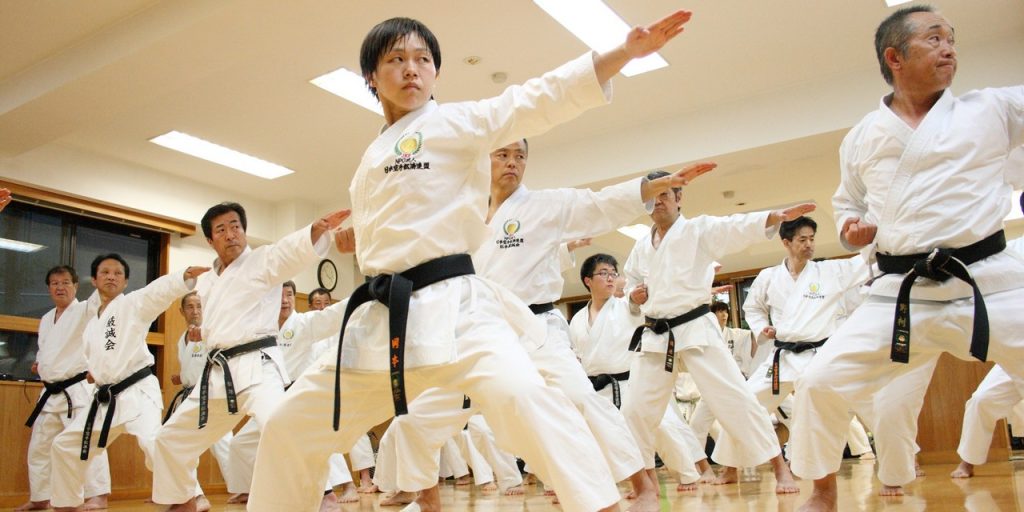
Boxing and karate, two of the most revered combat sports, have captivated enthusiasts worldwide with their unique styles, rich histories, and profound cultural impacts. At first glance, they might appear as just physical activities, but a deeper dive reveals intricate philosophies and techniques that define not only a sport but a way of life. Boxing, with its emphasis on powerful punches and agile footwork, contrasts starkly with karate’s focus on discipline, precision strikes, and varied kicking techniques. This article delves into the heart of the “Boxing vs Karate” debate, offering an insightful exploration of each discipline’s nuances. From their origins to modern practices, we unravel the tapestry of skills, mental fortitude, and cultural significance that these two martial arts embody, providing a comprehensive guide for aficionados and newcomers alike.
Table of Contents
What Is Karate?
Karate, a traditional Japanese martial art, emphasizes striking techniques, including punches, kicks, and open-handed strikes. Originating in Okinawa, it balances physical prowess with mental discipline, focusing on precision and control.
Karate practitioners, known as karateka, engage in three main practices: Kihon (basic techniques), Kata (pre-arranged forms), and Kumite (sparring). Each form hones skills, from fundamental movements to combative applications. Karate instills values like respect and perseverance, transcending beyond mere self-defense to foster personal growth.
With various styles like Shotokan and Goju-Ryu, it caters to diverse preferences. Its global popularity and inclusion in the Olympics highlight its enduring appeal, making karate a martial art that cultivates both body and mind.
What Is Boxing?
Boxing, often referred to as “the sweet science,” is a combat sport with a focus on striking using only the fists. It’s characterized by quick footwork, powerful punches, and intricate defensive techniques. Originating as an organized sport in ancient Greece, boxing has evolved through centuries, becoming a popular global phenomenon.
A boxing match is typically divided into timed rounds, with fighters wearing gloves, aiming to land clean, effective punches on their opponent while avoiding incoming strikes. Training emphasizes endurance, speed, strength, and strategic thinking. Beyond physical prowess, boxing instills discipline, resilience, and mental toughness in its practitioners.
The sport, governed by rules and weight classes, has a rich legacy in both amateur and professional circuits, including the prestigious Olympic Games, making it a respected and enduring discipline in the world of sports.
Differences Between Boxing and Karate

Boxing and karate differ significantly in techniques, objectives, and philosophies. Boxing, a Western sport, focuses exclusively on punches and footwork, using gloves for strikes aimed at the upper body and head. It emphasizes agility, power, and endurance, honing reflexes and cardiovascular fitness.
Conversely, karate, a Japanese martial art, involves a broader range of techniques, including kicks, punches, knee and elbow strikes, and open-handed techniques. It places equal importance on mental discipline, with an emphasis on self-control and spiritual development.
Karate training includes kata (forms), kumite (sparring), and kihon (basics), offering a holistic approach to physical and mental well-being. While boxing is primarily seen as a competitive sport, karate is often practiced for self-defense, fitness, and personal growth, embodying a more comprehensive lifestyle approach.
Which is Better for Self-Defense Boxing or Karate?
Choosing between boxing and karate for self-defense depends on individual needs and the context. Boxing specializes in powerful punches and rapid footwork, enhancing reflexes and close-range defensive capabilities. It’s ideal for situations requiring quick reactions and physical resilience.
Karate, with its array of techniques including kicks, strikes, and blocks, focuses on both physical prowess and mental discipline. It’s beneficial for scenarios needing distance control and varied defensive tactics. Karate also emphasizes situational awareness, crucial in self-defense.
While boxing offers effective tools for immediate, power-focused defense, karate provides a diverse arsenal suitable for various confrontations. Ultimately, the decision hinges on personal preference and the specific nature of potential self-defense situations, with each discipline offering unique strengths.
Karate vs Boxing: Who Wins for Physical Fitness?
When assessing karate and boxing for physical fitness, each offers distinct benefits. Boxing is exceptional for cardiovascular health and stamina, driven by its high-intensity training involving constant footwork and rapid punching.
This not only boosts heart health but also enhances upper body strength, core stability, and reflexes. Karate, in contrast, offers a holistic fitness regime, improving flexibility, balance, and muscle endurance. The practice of kata (forms) and a variety of striking and blocking techniques ensures a comprehensive full-body workout. While boxing excels in enhancing cardiovascular fitness and upper body conditioning, karate provides an all-encompassing approach, focusing on overall body strength, flexibility, and coordination.
Ultimately, the choice between karate and boxing for physical fitness depends on individual goals and preferences, as both disciplines offer unique and effective fitness benefits.
Boxing vs. Karate: The Best Sport for You

Deciding between boxing and karate depends on your personal objectives in martial arts. Boxing suits those seeking an intense, cardio-focused workout, emphasizing strength, speed, and endurance. It’s ideal if you enjoy the rigor of repetitive, high-energy training focused on developing quick reflexes and powerful strikes.
Karate, on the other hand, is for those who value a diverse regimen that equally prioritizes physical skills and mental discipline. It enhances flexibility, balance, and mental focus, making it suitable for a more holistic approach to martial arts. Additionally, the quality of instruction available locally should influence your choice.
A reputable school or skilled instructor in either boxing or karate can significantly enhance your learning and experience. Therefore, consider both your personal fitness and self-development goals and the quality of training available when choosing the right martial art for you.
Conclusion
In concluding the “Boxing vs Karate” discussion, the choice hinges more on personal alignment with individual goals and preferences than on the superiority of one discipline over the other. Boxing, renowned for its cardiovascular intensity and focus on strength and agility, is ideal for those seeking a high-energy, power-centric workout. Its emphasis on speed and endurance appeals to those who favor a dynamic, repetitive training style.
Conversely, karate offers a broader spectrum of techniques, integrating physical fitness with mental discipline and strategic thinking. It suits those desiring a comprehensive approach that melds physical prowess with mental resilience, ideal for overall self-development.
When deciding between boxing and karate, consider your fitness aspirations, martial arts interests, and the quality of local instruction. Each path in martial arts leads to personal growth, with the choice between the focused intensity of boxing or the diverse discipline of karate depending on what resonates with your personal journey in martial arts.

I’m Daniel Palenov, a passionate sports enthusiast with experience in boxing, MMA, tennis and running. My approach to training, shaped by these diverse disciplines, combines strength and strategy. Here you’ll find not only insightful equipment reviews, but also inspiring personal stories to help you achieve peak performance. My goal is to share the vibrant energy of sports, helping you on your path to health and excellence. Join me on this journey of athletic discovery and personal growth.